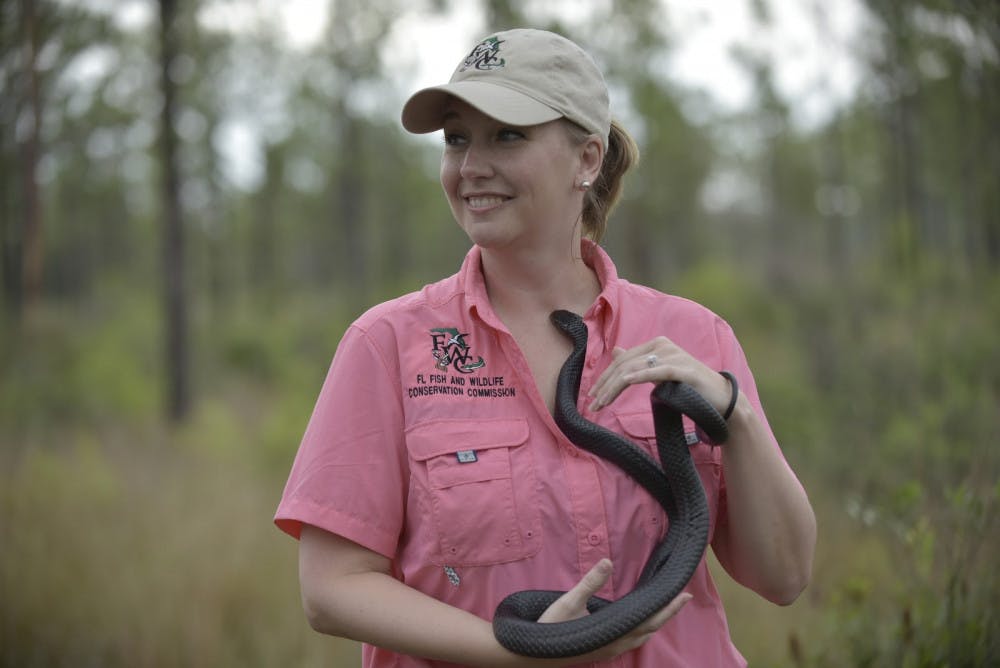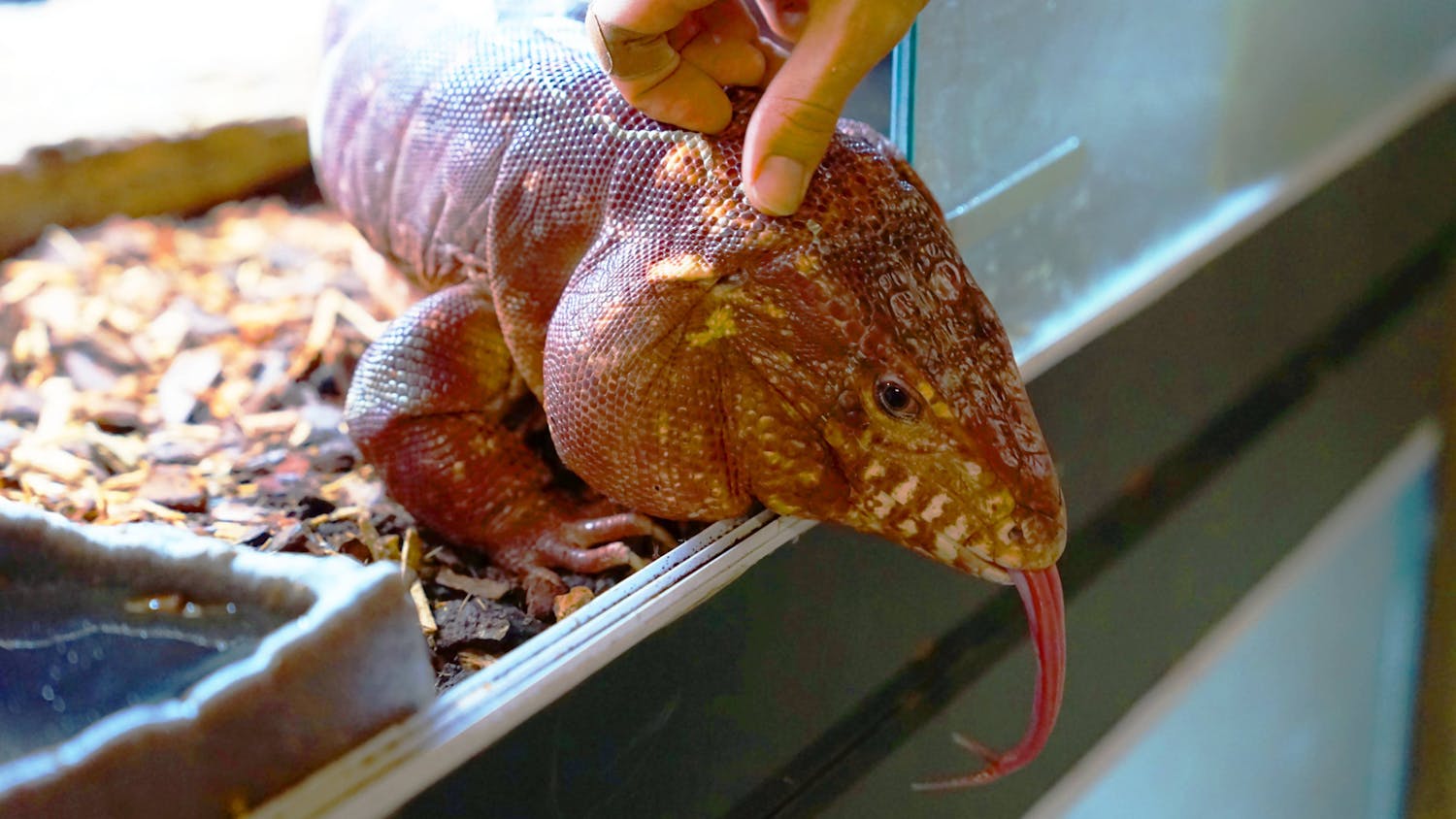An eastern indigo snake named Floyd was introduced to his native habitat for the first time on a sunny afternoon in Bristol, Florida.
Floyd was part of a group of 20 black-scaled eastern indigo snakes being released into the Apalachicola Bluffs and Ravines Preserve (ABPR) as part of a ten-year reintroduction effort.
Collaborators from multiple conservation agencies freed the snakes July 23. Brooke Talley, the reptile and amphibian conservation coordinator for the Florida Fish and Wildlife Conservation Commission, released Floyd herself.
“It was great,” Talley said. “The release date was nice because it’s a good opportunity for all those partners to actually participate instead of just planning it.”
The eastern indigo is a non-venomous apex predator that preys on both venomous and non-venomous snakes, Talley said. As the largest snake native to North America, the black-scaled eastern indigo stretches over 8 feet long.
However, habitat loss and fragmentation in northern Florida has caused the native eastern indigo population to be non-existent in the panhandle for decades, Talley said.
“By restoring this apex predator, you’re really restoring the ecosystem function,” Talley said.
One at a time, each snake was safely released in front of gopher tortoise burrows, where they typically nest to hide from the heat of summer or the chill of winter, Talley said.
“All of them, on their own, just instinctively went in those burrows,” Talley said. “We’d gently lay the snake down. They were all very calm.”
David Printiss, the Nature Conservancy’s North Florida Program manager, said the 12 male and eight female snakes released this year were born and raised in the Central Florida Zoo’s Orianne Center for Indigo Conservation.
“It’s a very big team effort. Many state and federal agencies are playing large parts,” Printiss said.
This release was the second of a 10-year series to reintroduce this species back into North Florida, Printiss said. All of the snakes were surgically implanted with radio transmitters, allowing the team to monitor these newcomers.
“Last year after reintroduction, we found one of the snakes eating a copperhead,” Printiss said. “So they do seem to know, by instinct, what they need to do.”
As this apex predator navigates its new home, Printiss expects to see a reduction of venomous snakes, especially copperheads, which Printiss said are abnormally abundant in ABRP.
“Every species plays a function,” Printiss said. “There are some that are just so important that if removed from the system, it should be considered to put them back. The eastern indigo snake is one of them.”
Brooke Talley waits to release Floyd at Apalachicola Bluffs and Ravines Preserve.
David Printiss holds an eastern indigo at the release.
David Printiss releasing an eastern indigo snake at the entrance of a gopher tortoise burrow, where these snakes take shelter from the heat of the summer.






